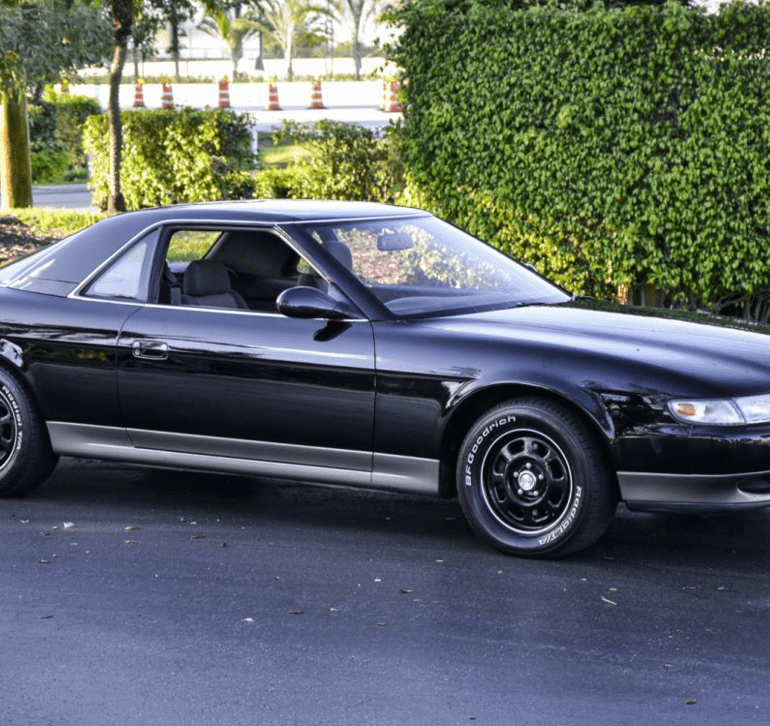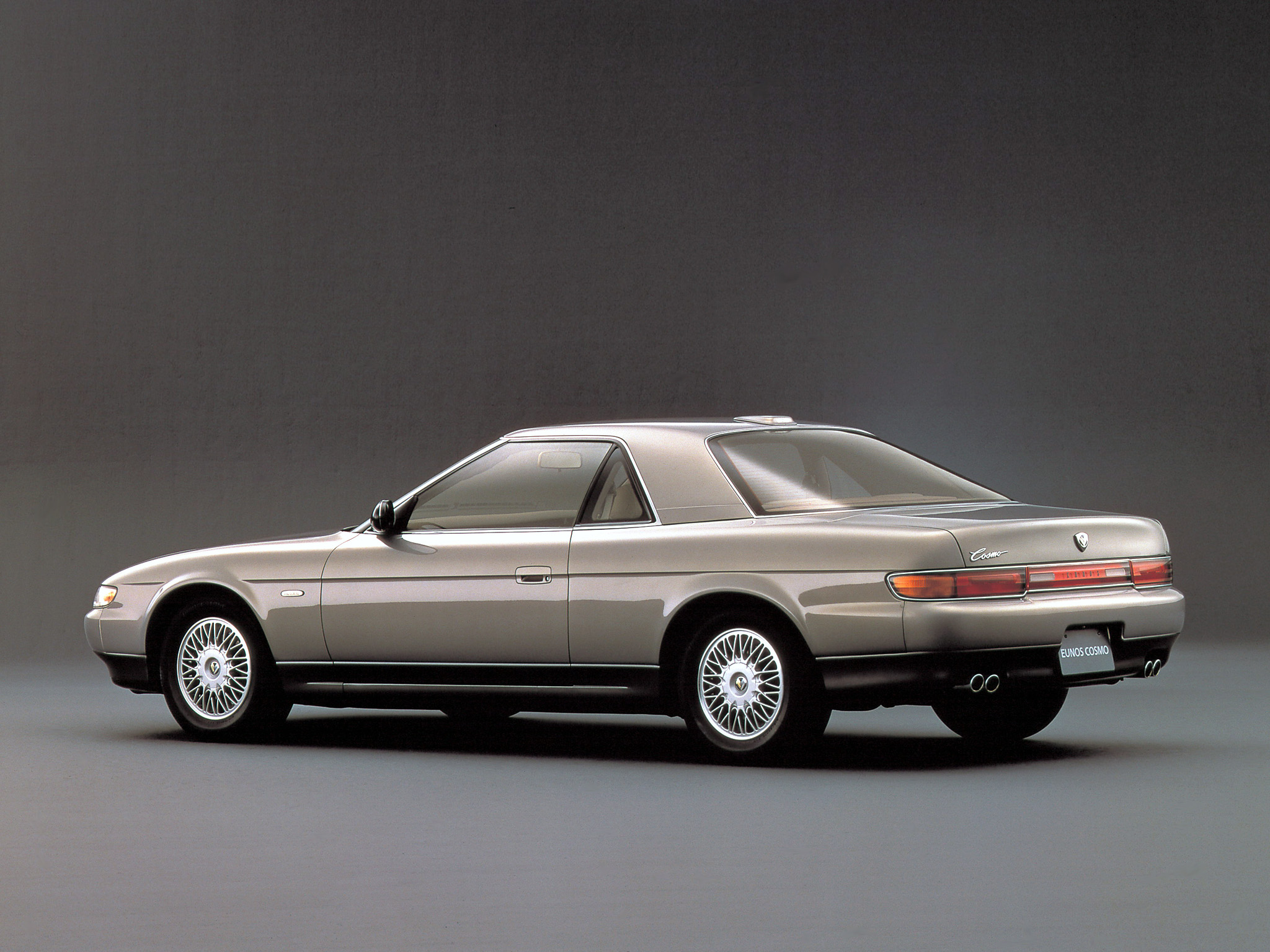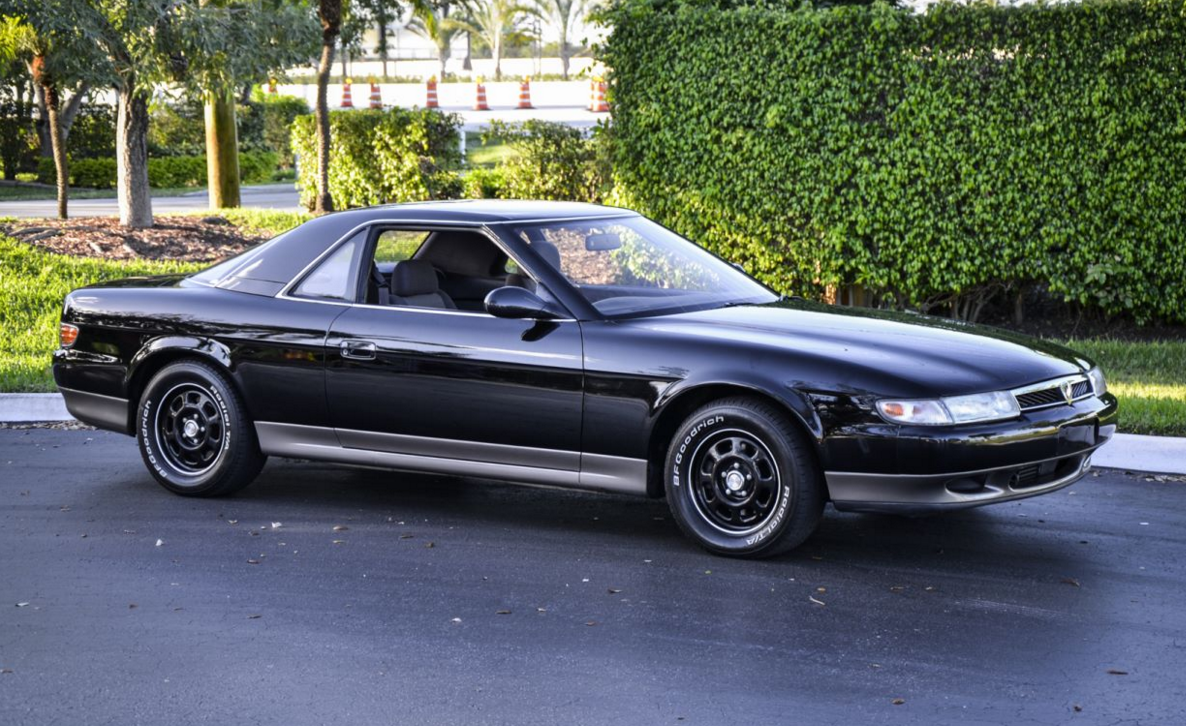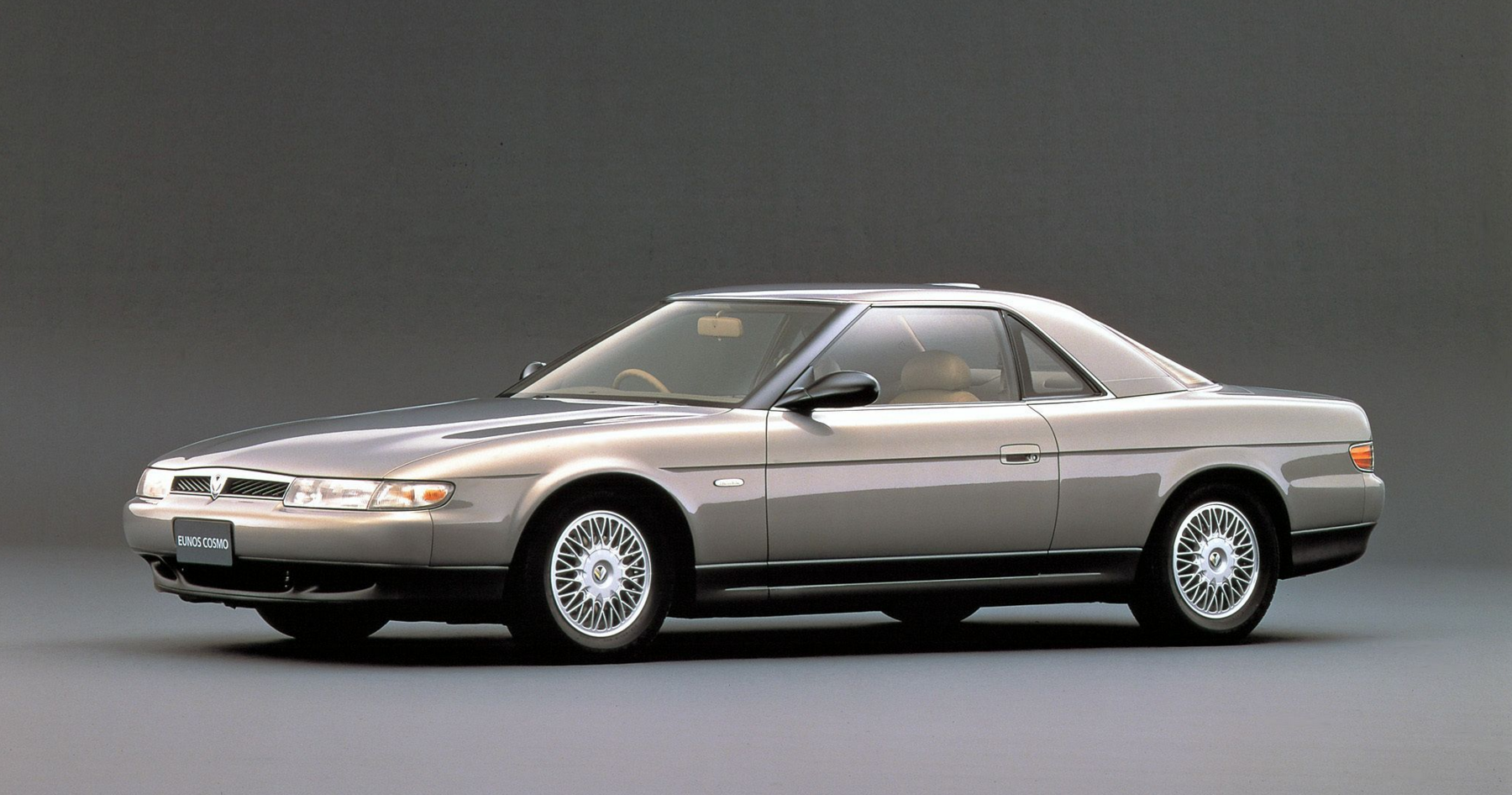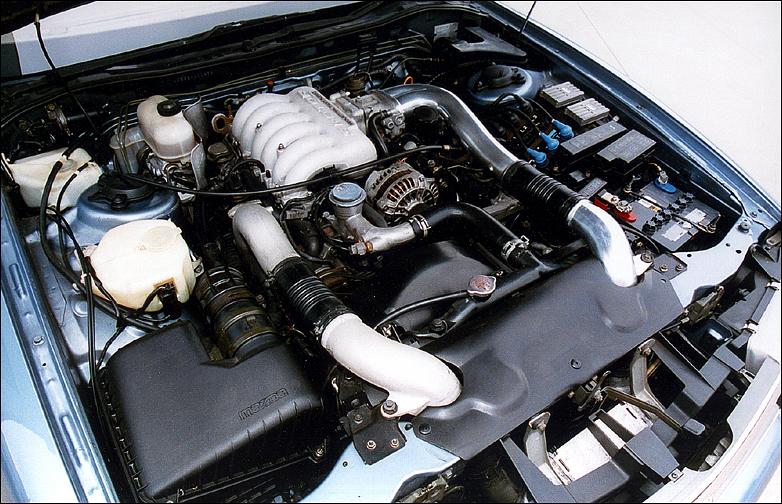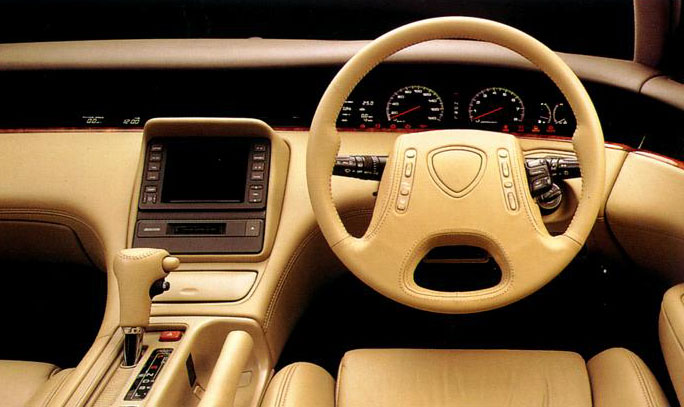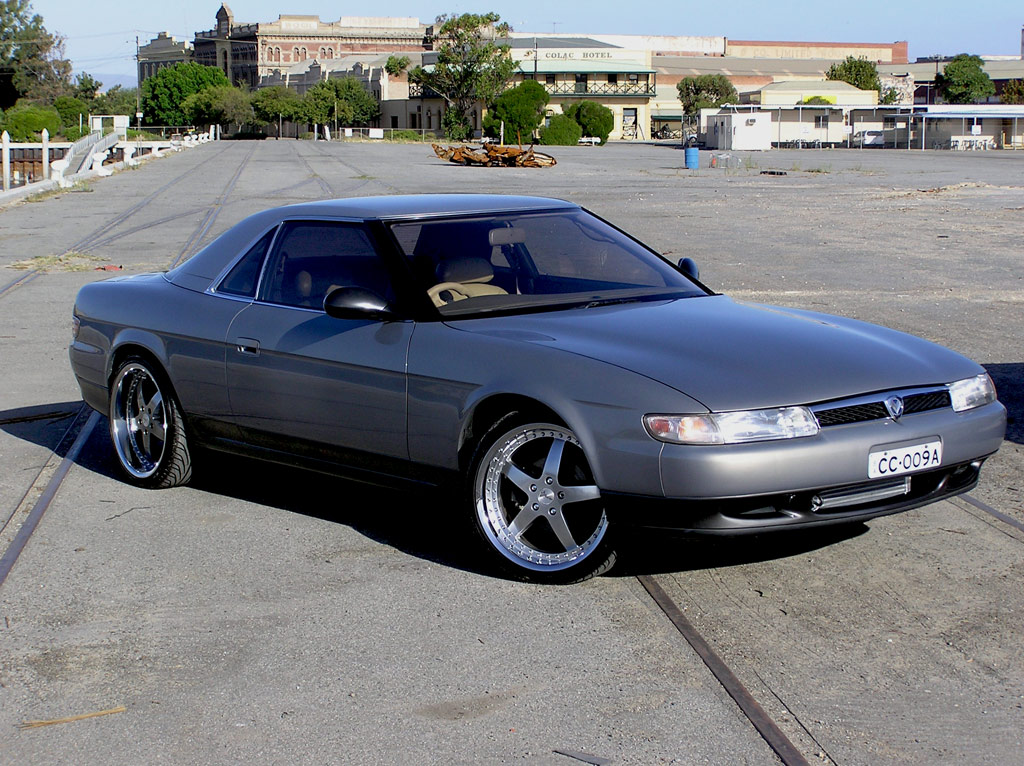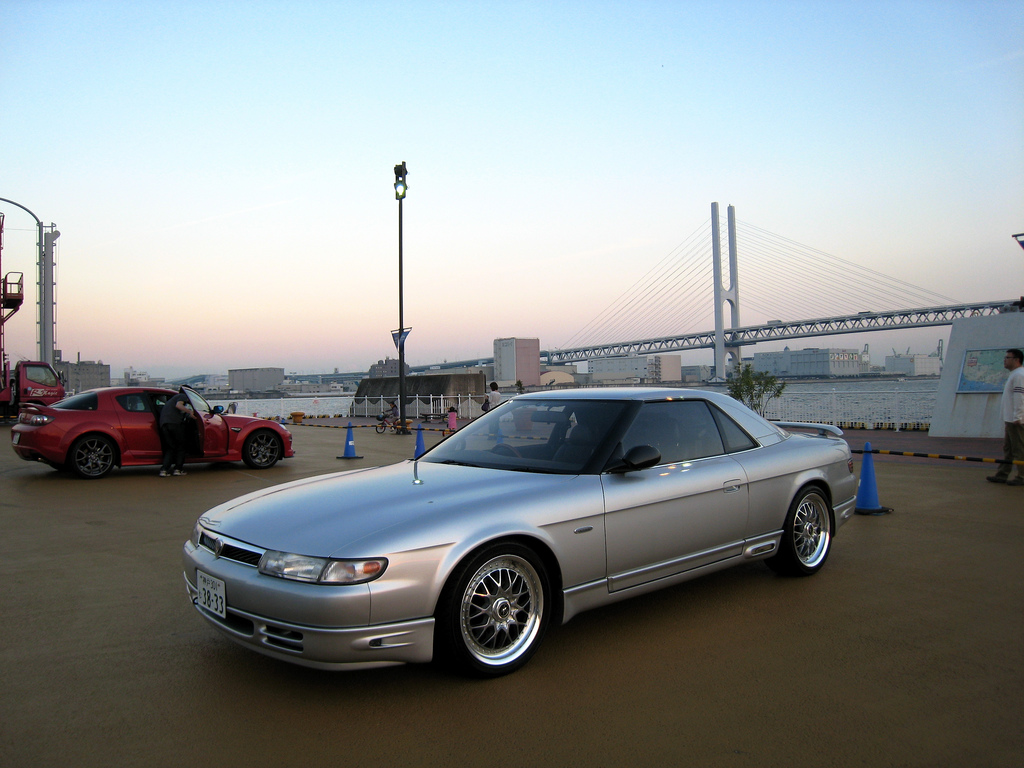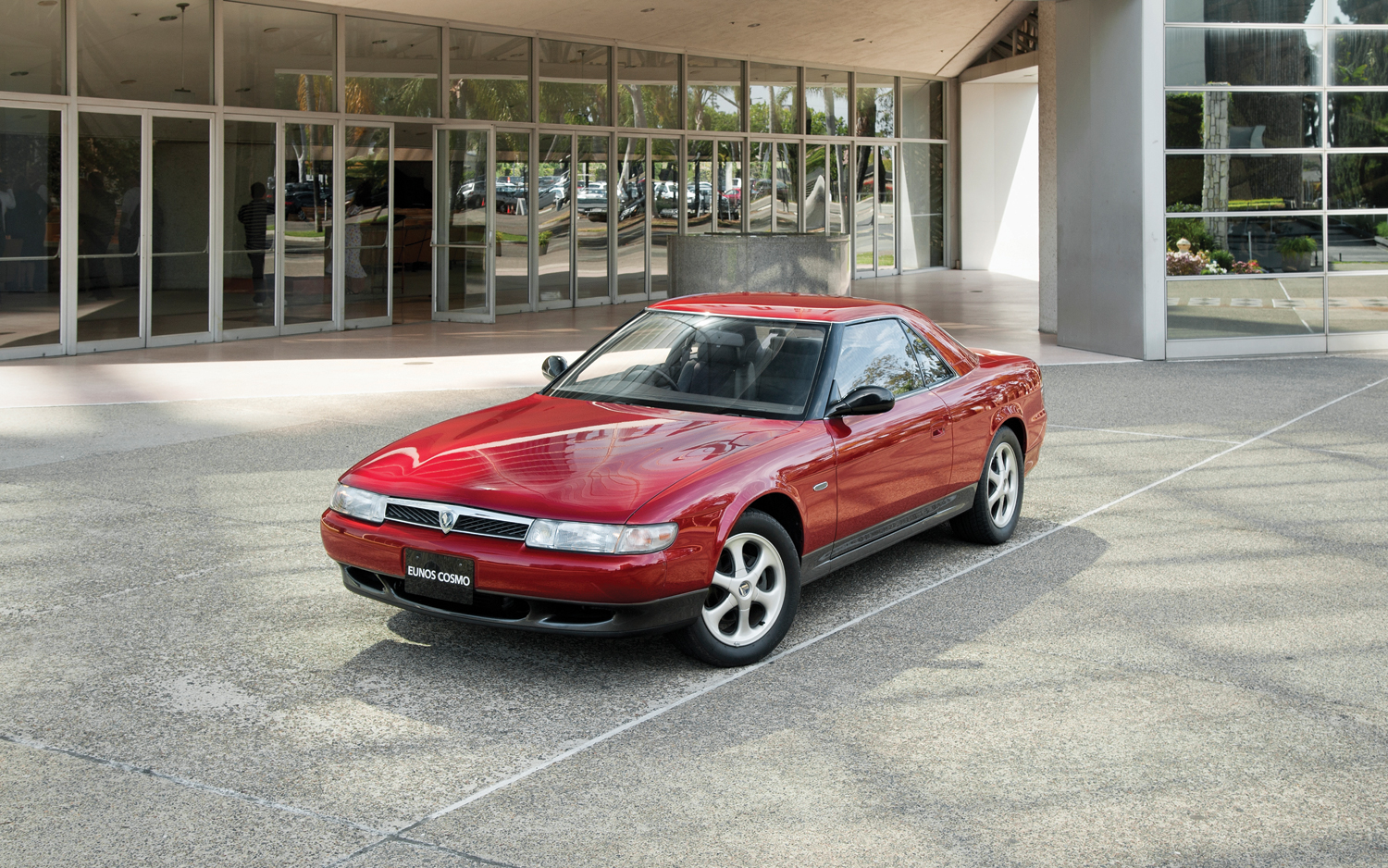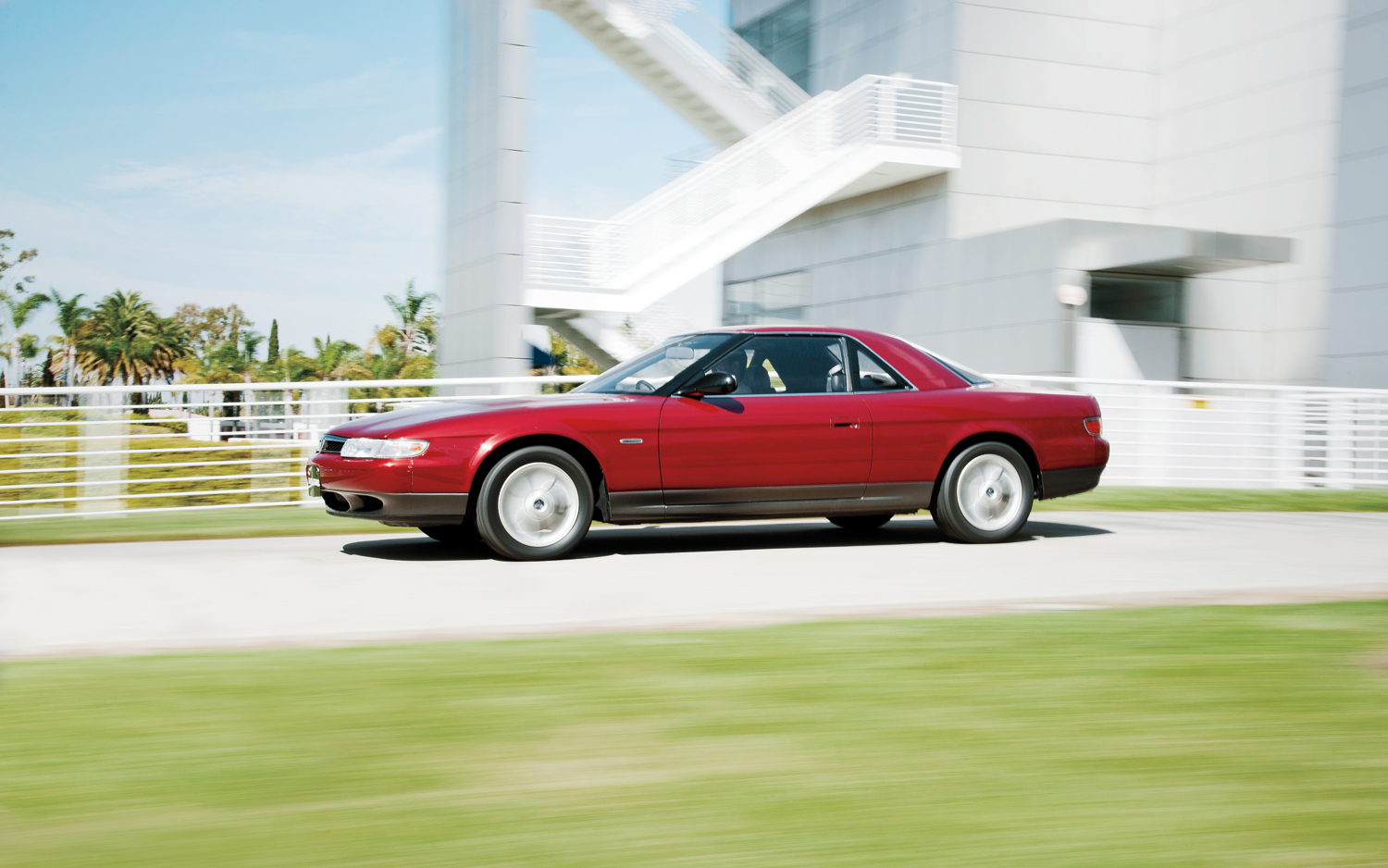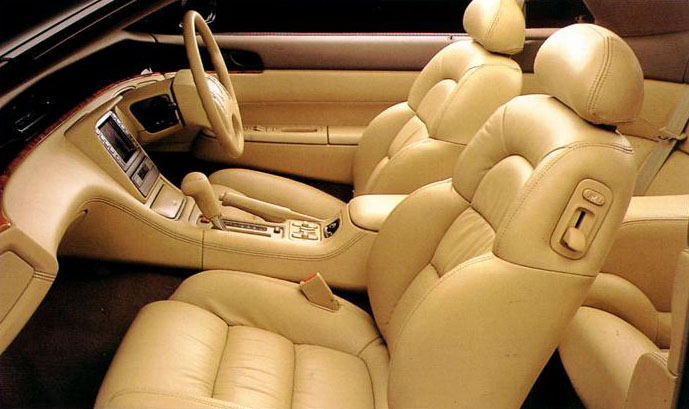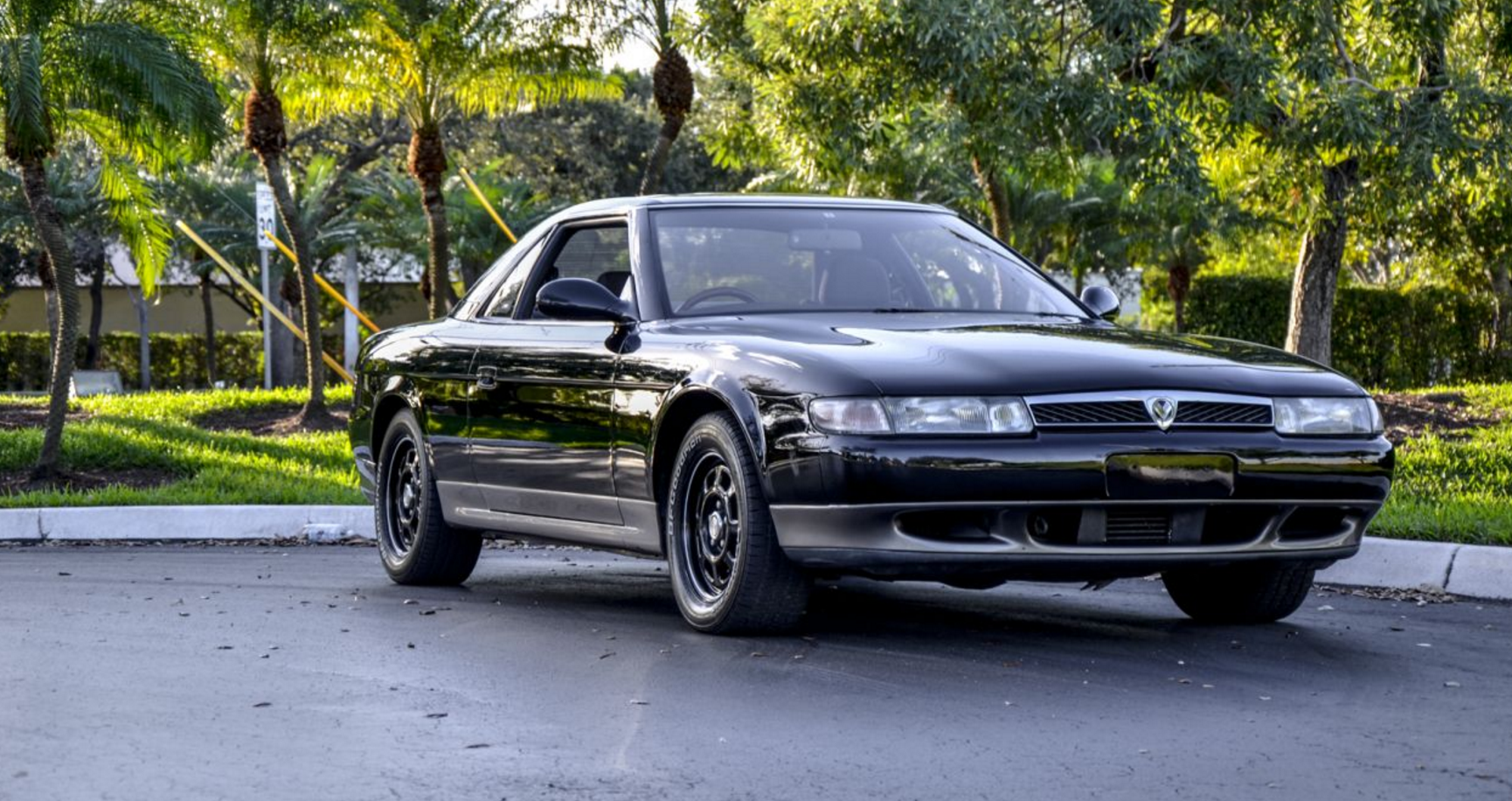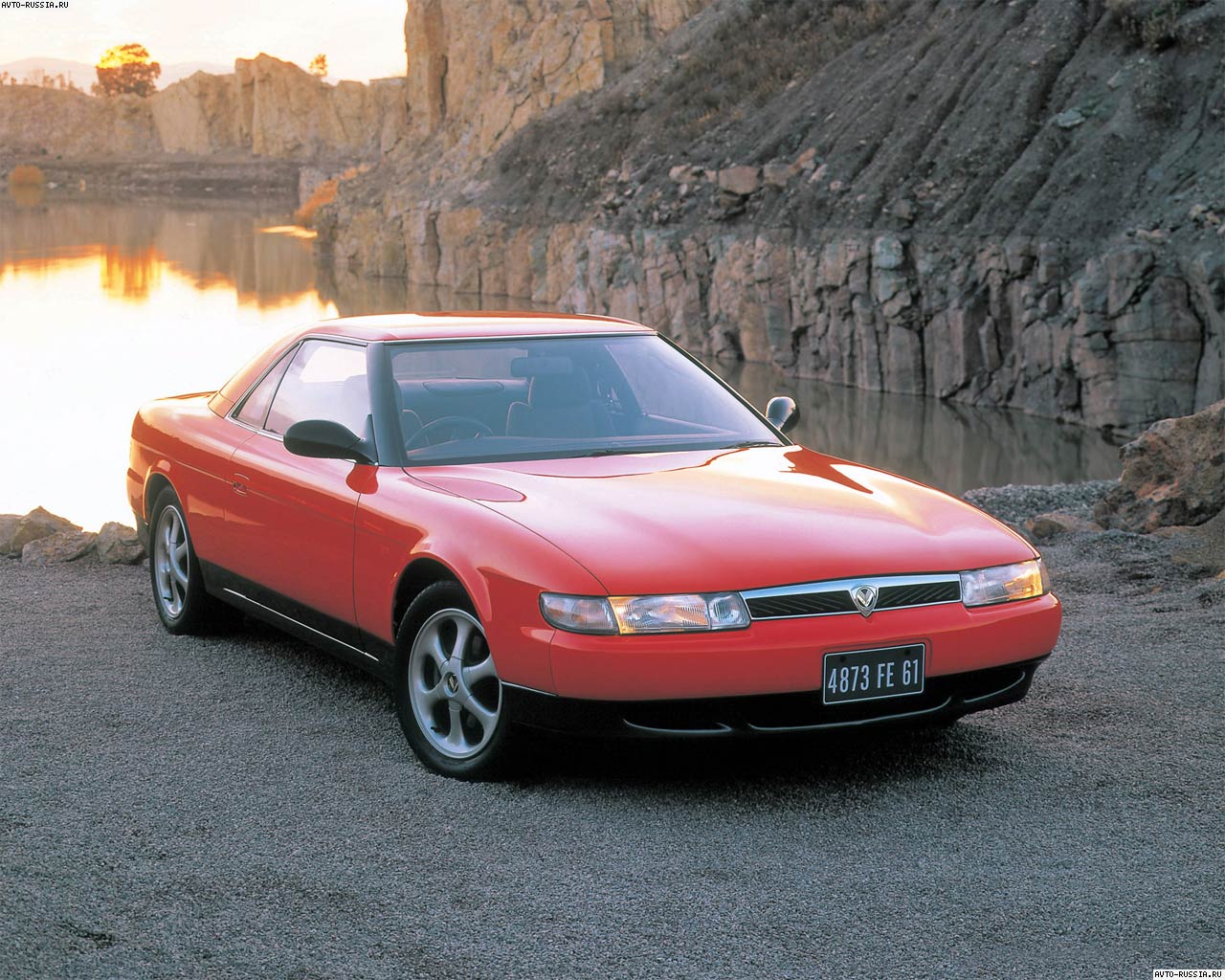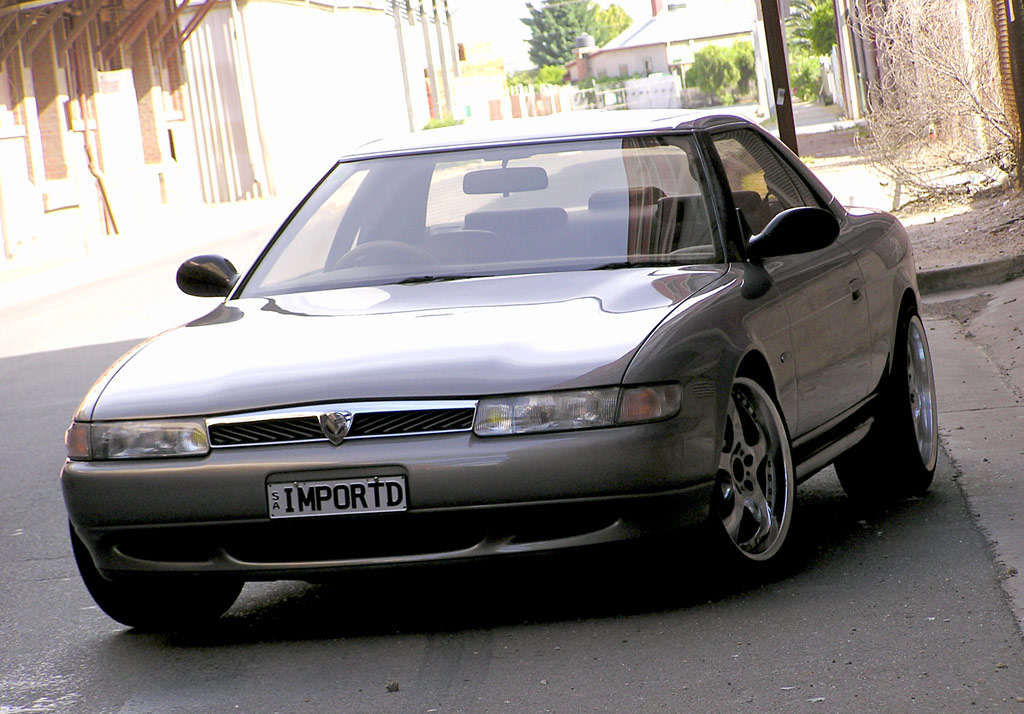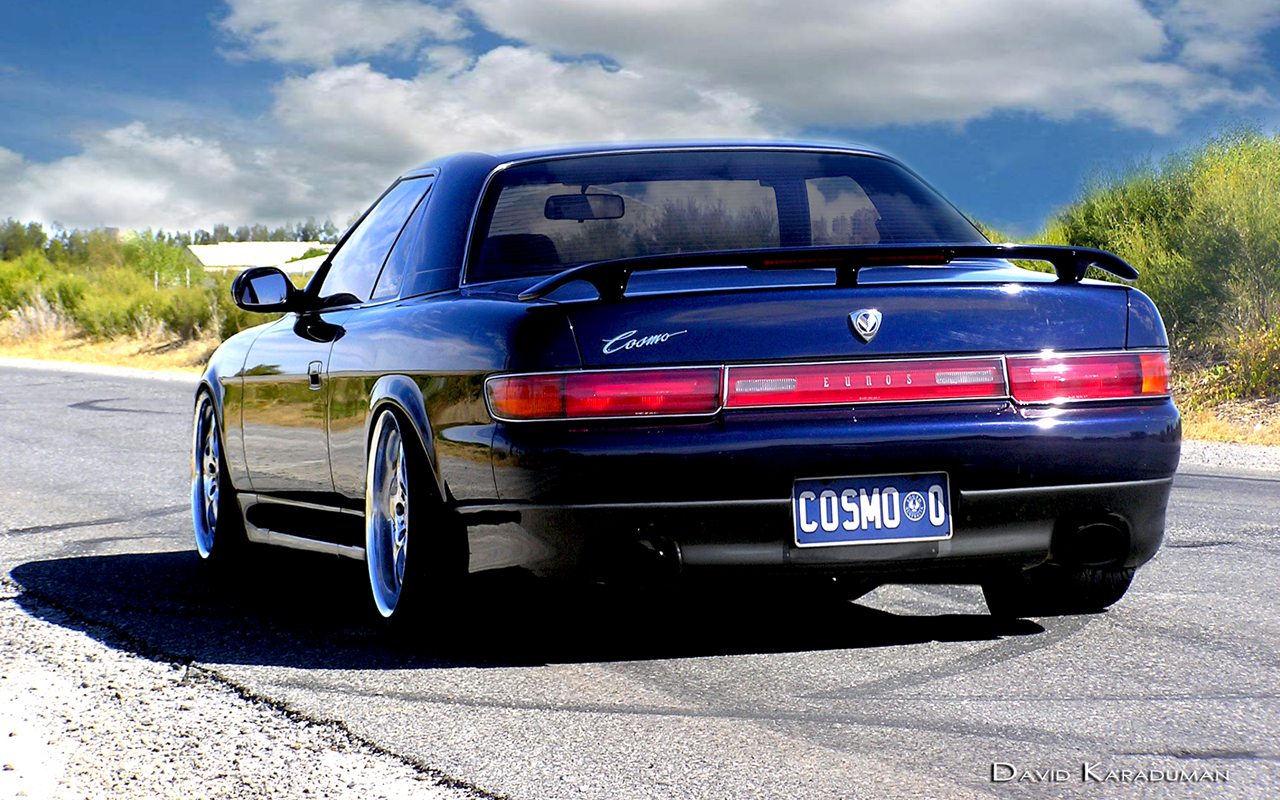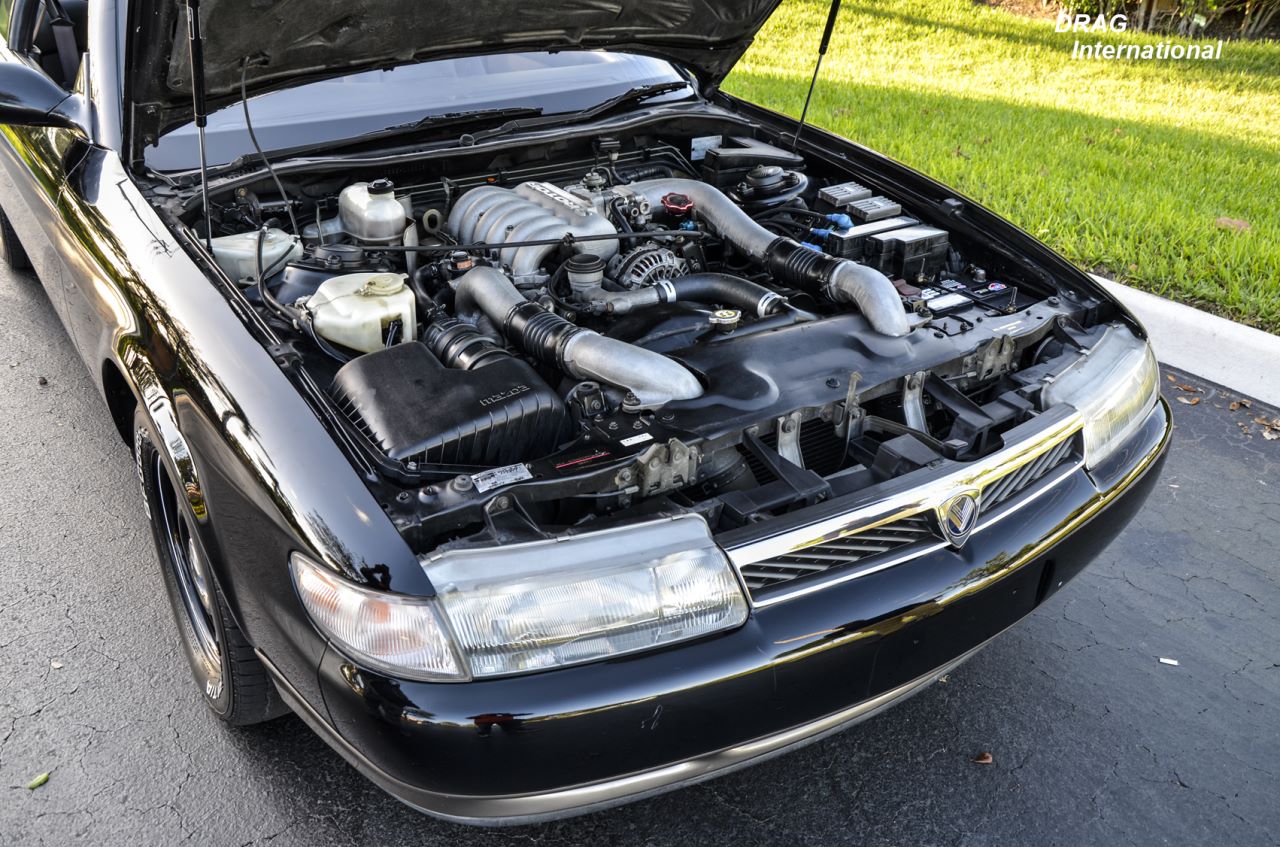Mazda Cosmo
The Mazda Cosmo is a grand touring coupé that was produced by Mazda from 1967 to 1995. Throughout its history, the Cosmo served as a “halo” vehicle for Mazda, with the first Cosmo successfully launching the Mazda Wankel engine. The final generation of Cosmo served as Mazda’s flagship vehicle in Japan, being sold as the Eunos Cosmo through its luxury Eunos division in Japan.
Mazda chose to use the name cosmo, reflecting international cultural fascination with the Space Race, as Mazda wanted to showcase the rotary engine as forward-thinking, with a focus on future developments and technology.
While few knew that the Mazda Milinnea, was to be the flagship sedan of Mazda’s aborted luxury brand Amati, everyone knows that one car does not make a brand. With that in mind Mazda planned to introduce a luxury 2+2 coupe counterpart to the innovative Millenia. The coupe called the Cosmo offered a great many firsts including the first application of a touchscreen and a GPS system as optional equipment. Amati would have been Mazda’s way to introduce the world to high-end luxury products that were once sold only in Japan.
The Cosmo name was not new to Americans, as it was an ambitious if not flawed Japanese take on the Monte Carlo. The second generation coupe was sold during the mid to late 70’s. With the fourth and final generation of Cosmos of 1990, Mazda had incorporated all of its trademark rotary engine technologies with a twist. The Cosmos was the first and only Mazda equipped with a triple-rotor engine with twin-turbocharging.
Two displacements of 1.3 (230 hp) or 2.0 were available. The larger engine featured a two stage turbocharger that boosted power to 280. Turbo lag, a common trait from the era was eliminated with a sequential boost system similar to what the late Toyota Supra had, but years before it popularized the concept. The concept of twin sequential turbos was a first for a rotary powered car (the RX-7 would come later) and one of the few applications in any car for that matter. The rear wheel drive Cosmo came only as a coupe and with its long 108 in wheelbase, it rode comfortably like a proper gran tourer should. As comfortable as it was, it handled well and spoiled its driver and passengers with state of the art technology.
For car with a sporting high-end mission the Eunos was not particularly flashy on the outside. It’s shape reminded one of any number of lower priced Japanese sport coupes. Although the exterior may not have excited many, the interior was much more inspiring. A curved dash with flowing lines was very much the model of ergonomics best practices, circa 1990. The recessed displays blended into a dark band that wrapped around the cabin, much like the ’90 to 94 Honda Prelude. Leather and wood finished off the feel and look of luxury.
The technologies that made the Cosmo a comfortable luxury cruiser also made it a capable GT car. With a top unregulated speed of 158 mph, it was one of the fastest cruisers of it’s type. The Cosmo was heavy but could still manage a respectable 0 to 60 run in the low 6 second range, putting it in the company of many sports cars. The only negative was the poor fuel economy due to mostly to lugging more than 3500 lb. around and the somewhat restrained outer appearance. That may have been a plus, as the Cosmo was intended for the executive who wanted performance and technology in a low-key package vs. the flash of a Mercedes or Jaguar.
At first glance, the Cosmo might have resembled the $20,000 Nissan 180/240SX, but Cosmo had price tag more than double that putting it in the same company as Mercedes and BMW. Although they were designed with the left hand drive American and Japanese market in mind, there were RHD units sold in the UK, Australia and New Zealand. In all nearly 9,000 units were sold between 1990 and 1995.
The end of the Cosmos corresponded with Mazda’s decision to end the Eunos brand and incorporate it’s luxury and speciality offerings under the Mazda brand. Little known outside of Japan, the Cosmos lives on in video games like Sega GT and Gran Turismo. A car like the Cosmo would not have fitted too well into Mazda’s current lineup in the US, especially since the trend for the already stretched company seemed to lean towards small SUV’s as its largest vehicles. The largest coupe, the MX-5 Miata is far too small and the largest sedan, the 6 is not luxurious enough. Hopefully the time will come once again for a true GT cruiser from Mazda or maybe the revival of the Amati brand concept is overdue.
In Detail
| production years | 1990 – 1995 |
| built at | Tokyo, Japan |
| production | 9000 |
| price $ | $100,000 USD |
| engine | Rotary 20b |


